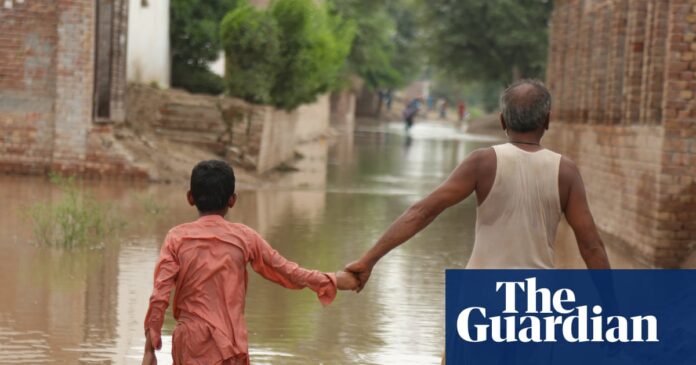"Devastation in Punjab: Farmers Face Unprecedented Flooding and Loss Amid Monsoon Fury"
Devastating Floods Ravage Punjab: A Crisis Unfolds
Punjab, India — As relentless monsoon rains battered the Indian state of Punjab, farmers faced an impending disaster that culminated this week in the worst flooding the region has seen in over three decades. By Wednesday, the fears of many were realized as floodwaters surged, submerging vast expanses of farmland and devastating livelihoods.
The Impact on Agriculture
The torrential rains led to the inundation of hundreds of thousands of acres of rice paddies, cotton fields, and sugar cane crops, all poised for imminent harvest. Reports indicate that floodwaters reached depths exceeding five feet, leaving behind a grim landscape of muddy devastation and the carcasses of drowned livestock.
Parmpreet Singh, a 52-year-old farmer from Ajnala in Amritsar district, expressed his despair: “The crops are ruined, and even our homes are in danger of collapsing.” Singh, along with his elderly mother and two young children, has taken refuge on the roof of their house to escape the rising waters. “My entire livelihood depends on my seven hectares of farmland, all of which has been destroyed,” he lamented, highlighting the financial ruin that many farmers now face after investing heavily in seeds and fertilizers.
Human Toll and Infrastructure Damage
The flooding has claimed at least 43 lives and affected nearly 2,000 villages across Punjab, leaving hundreds of thousands without electricity and access to clean water. The stench of decaying animal remains permeates many affected areas, underscoring the humanitarian crisis unfolding in the region.
“This is the worst time Punjab has ever faced,” stated Parminder Singh Pinki, a lawmaker from Firozpur district, one of the hardest-hit areas. “I have never witnessed such devastation in my lifetime. Entire farmlands are submerged under water, now layered with mud and sand.”
Government Response and Criticism
The Indian government has faced severe criticism for its inadequate response to the disaster. Farmers and local leaders have accused the ruling Bharatiya Janata Party (BJP) of negligence, asserting that the government failed to implement necessary emergency measures despite prior warnings about extreme weather conditions.
“The government had been aware for months about the weather forecasts and should have put proper measures and emergency responses in place,” Pinki asserted. “But that never happened, and this failure has led to destruction on such a massive scale.”
Surinder Singh, a 75-year-old farmer from Sarala Kalan village in Patiala, echoed these sentiments, expressing skepticism about government promises of relief. “In the end, we are left to take care of ourselves,” he said, questioning the long-term viability of agriculture in India, which employs half of the country’s workforce.
Regional Context: A Cross-Border Crisis
The flooding crisis is not confined to India. Across the border in Pakistan’s Punjab province, the situation has been even more catastrophic, with nearly 2 million people evacuated and about 4,000 villages submerged. The Indian government’s decision to release water from heavily filled dams has exacerbated flooding on both sides of the border, leading to tensions between the two nations.
In Pakistan, Maratab Ali Gondal, a farmer from Mandi Bahauddin district, reported losing 90 acres of crops due to rising water levels in the Chenab River. “The water erosion has taken all of my land,” he lamented, attributing the disaster to local government negligence rather than blaming India.
Urban Areas Also Affected
The flooding has not only devastated rural areas but has also impacted urban developments. In Lahore, affluent housing developments near the Ravi River have seen homes inundated with floodwaters, raising questions about urban planning and environmental management. Residents like Umar, who invested their life savings in new homes, are now grappling with the consequences of poor infrastructure and rapid development.
Conclusion
As Punjab grapples with the aftermath of this unprecedented flooding, the future of its agricultural sector hangs in the balance. With climate change leading to increasingly extreme weather patterns, the resilience of farmers and the effectiveness of government responses will be crucial in determining the region’s recovery. The unfolding crisis serves as a stark reminder of the vulnerabilities faced by communities dependent on agriculture in the face of climate unpredictability.
